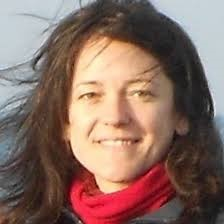Monitoring Coastal and Marine Environments Based on Remote Sensing Data
A special issue of Remote Sensing (ISSN 2072-4292). This special issue belongs to the section "Environmental Remote Sensing".
Deadline for manuscript submissions: 30 August 2024 | Viewed by 6210
Special Issue Editors
Interests: coastal geomorphology; habitat mapping; UAV; ROV; scuba underwater photogrammetry
Interests: geomorphology; marine geology; benthic habitat mapping
Special Issues, Collections and Topics in MDPI journals
Special Issue Information
Dear Colleagues,
Coastal and nearshore marine environments are essential ecosystems that provide critical resources and support numerous human activities. Moreover, coastal areas are the planet’s most dynamic and rapidly evolving systems and are highly vulnerable to human-induced and natural changes such as pollution, habitat loss, and climate change. Coastal erosion, flood risks, increased landslide occurrence, and wetland loss are expected to intensify in the coming decades, posing severe threats to inhabited areas and environmental assets. These environments are characterized by substantial spatial and temporal variability because of their position at the interface between sea and emerging lands. In these highly variable and dynamic environments, valid and repeatable monitoring methodologies are essential to identify the effects of climate change and reduce natural systems’ vulnerability to human impacts. Remote sensing has been proven to be a powerful tool for monitoring coastal and marine environments, providing large-scale, repetitive, and accurate data on various environmental variables. Thanks to the advances in sensors and platforms, the capability to obtain high-resolution temporal and spatial data has been considerably increased, allowing precise observations of modifications and impacts on coastal and nearshore marine environments.
This Special Issue will highlight the recent advances in remote sensing techniques for monitoring coastal and marine environments and integrating multi-source datasets and data, as well as cutting-edge processing techniques.
The Special Issue welcomes original research articles and reviews papers on the following topics:
- High-resolution innovative sensors and platforms to monitor coastal and nearshore marine environments.
- Machine learning techniques, artificial intelligence, and image analysis algorithms to map multitemporal changes along coastal areas.
- Multisource data integration for geomorphic seamless analyses of the coastal zones.
- Monitoring and estimating the anthropogenic coastal impacts at multiple scales.
Dr. Luca Fallati
Dr. Alessandra Savini
Dr. Gema Casal
Guest Editors
Manuscript Submission Information
Manuscripts should be submitted online at www.mdpi.com by registering and logging in to this website. Once you are registered, click here to go to the submission form. Manuscripts can be submitted until the deadline. All submissions that pass pre-check are peer-reviewed. Accepted papers will be published continuously in the journal (as soon as accepted) and will be listed together on the special issue website. Research articles, review articles as well as short communications are invited. For planned papers, a title and short abstract (about 100 words) can be sent to the Editorial Office for announcement on this website.
Submitted manuscripts should not have been published previously, nor be under consideration for publication elsewhere (except conference proceedings papers). All manuscripts are thoroughly refereed through a single-blind peer-review process. A guide for authors and other relevant information for submission of manuscripts is available on the Instructions for Authors page. Remote Sensing is an international peer-reviewed open access semimonthly journal published by MDPI.
Please visit the Instructions for Authors page before submitting a manuscript. The Article Processing Charge (APC) for publication in this open access journal is 2700 CHF (Swiss Francs). Submitted papers should be well formatted and use good English. Authors may use MDPI's English editing service prior to publication or during author revisions.
Keywords
- coastal mapping
- coastal geomorphology
- habitat mapping
- UAV
- ASV
- AUV
- ROV
- acoustic remote sensing
- optical remote sensing
- LIDAR
- underwater photogrammetry
- OBIA
- deep learning







